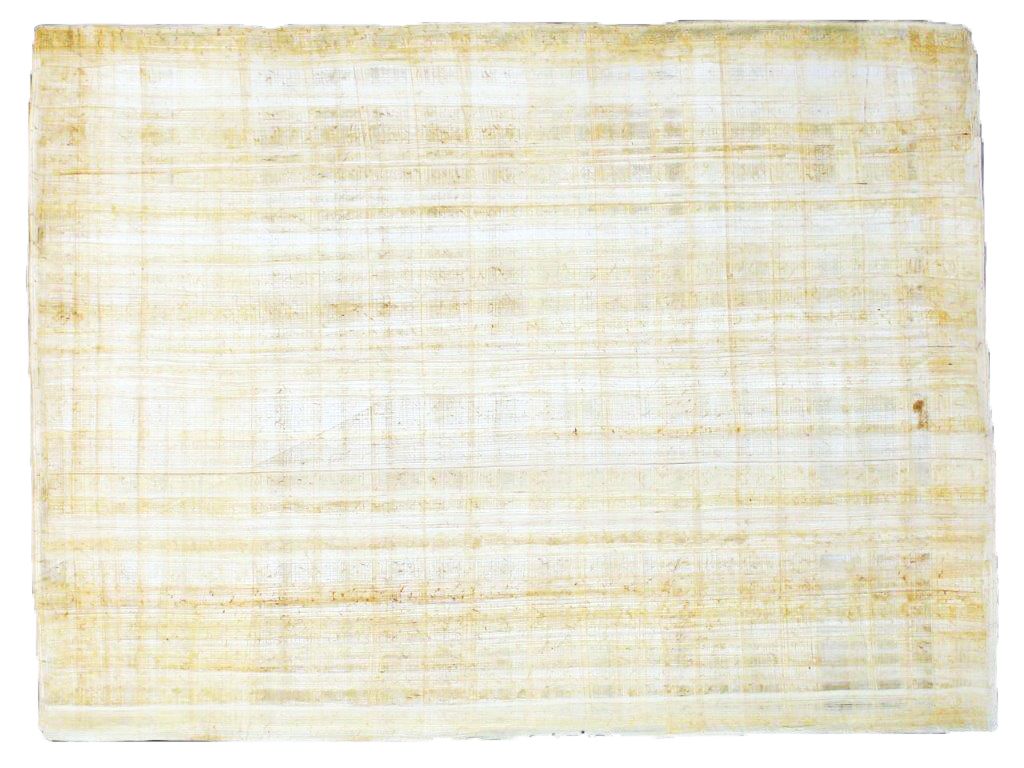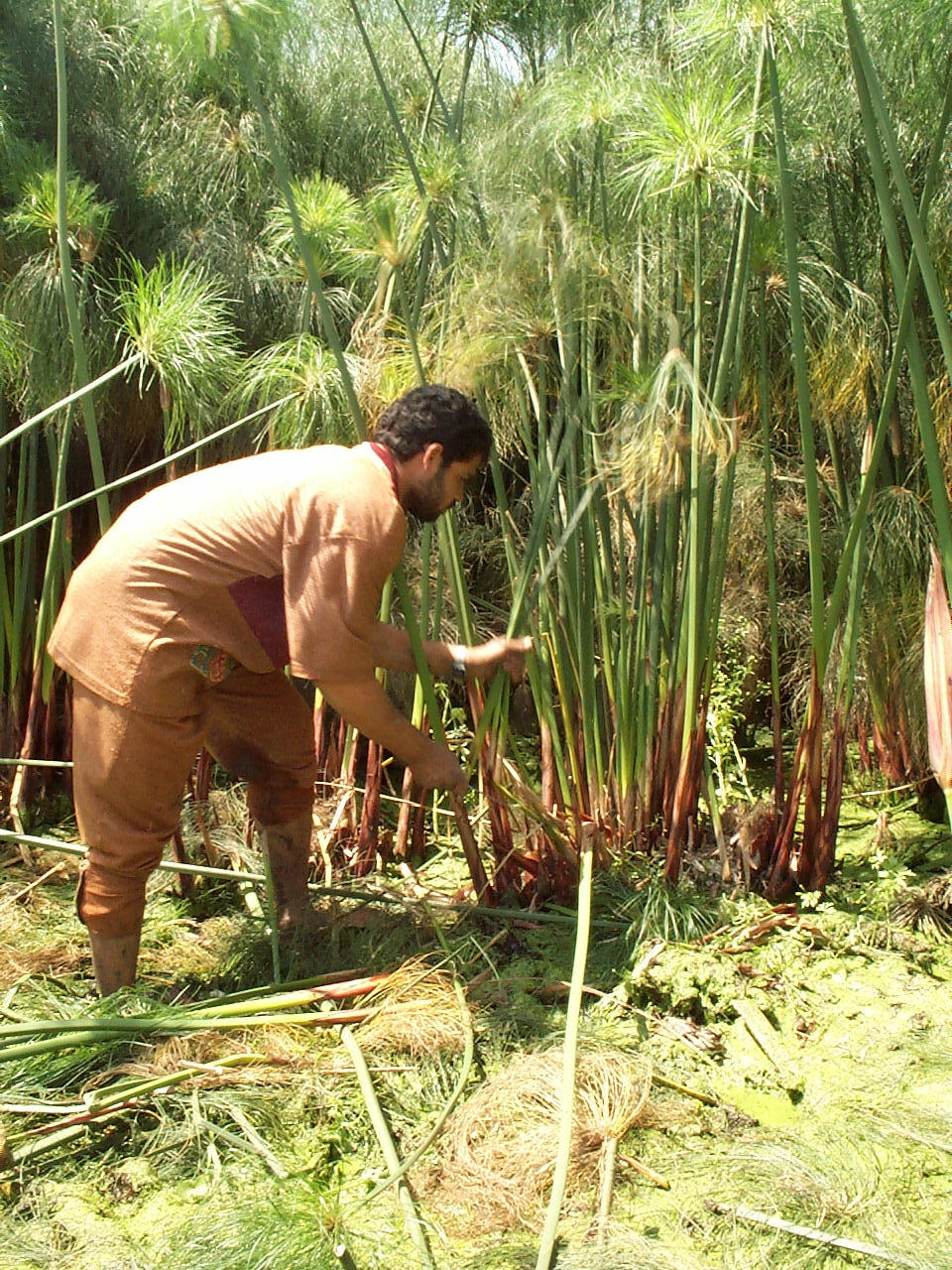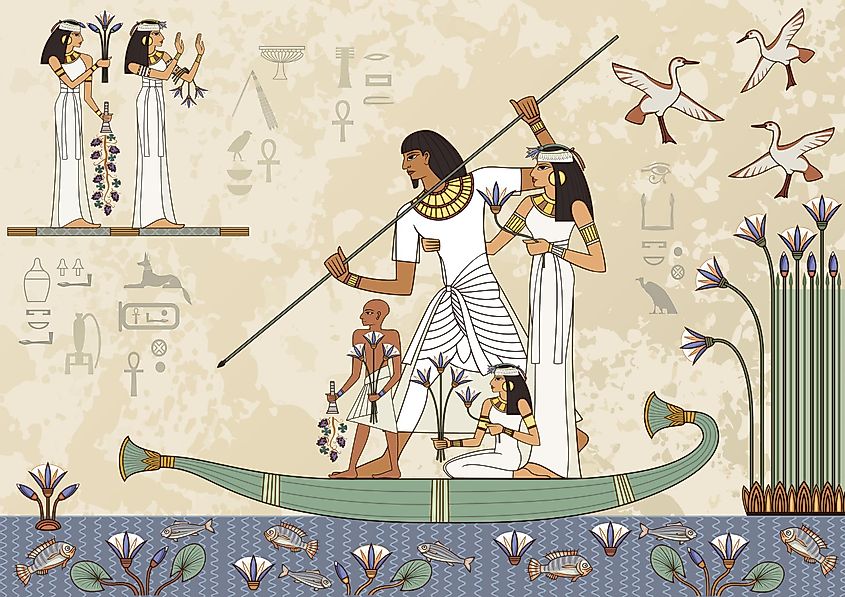Blank papyrus -62 x 82 cm - natural edge
Egyptian blank papyrus - approx. 62 x 82 cm - natural edge
Papyrus is a robust and versatile material with a wide range of design possibilities.
This is how history can be "grasped"! Genuine papyrus is also used in many ways in the field of art and museum education.
Ideal for subject-related school and art lessons. As it can be written on and painted in many different ways, there are no limits to the imagination.
Great for birthday cards, special invitations or original christening and wedding announcements.
PGI-Papyrus
made from hand-laid papyrus, produced in Egypt
fair trade with controlled cultivation
paintable with pens and watercolours
Our papyrus range
We offer bright, hand-laid natural papyrus from Egypt. From bookmark size, A4 and A3 to oversize of 92 x 192 cm, as well as various papyrus rolls, you are sure to find the right papyrus sheet. The design possibilities with papyrus are manifold. It can be inscribed with hieroglyphics or painted with various motifs. Tempera or watercolours, ink or felt-tip pens are suitable; it can even be printed with an inkjet printer.Papyrus is a natural product
In the Nile Delta, papyrus leaves are still produced in the traditional way. Families in the countryside harvest the papyrus stems, which can grow up to 6 metres high, and process the raw material into papyrus leaves with great skill. Carefully crafted papyri are produced in several steps, which always have an individual, handcrafted character.The history
Papyrus has been produced and used as a writing material in Ancient Egypt since the 3rd millennium BC. It was always a highly valued product whose sole marketing rights lay with the Pharaoh. The German word “Papier” goes back to the Greek word “pápyros”, which in turn is based on the ancient Egyptian word “pa-en-per-aa”, which roughly means “the pharaoh’s”.If papyrus is stored in a dry place, it has a very long life. Thus, papyrus scrolls or fragments that provided information about life in Ancient Egypt were and are still being found. The most famous papyrus scrolls are probably the Herculaneum Papyri, which were buried and preserved by the massive eruption of Vesuvius in 79 AD. Another 400,000 papyri from the ancient Egyptian Oxyrhynchus are still waiting to be deciphered and will once again bring much of interest to light. Julius Caesar is probably responsible for the greatest loss of knowledge in history. His soldiers set fire to the library of Alexandria, destroying thousands of important papyrus manuscripts.
Fair trade with Egypt
PGI buys Egyptian products directly from the producer. This allows us to bypass traders’ stations and offer our customers favourable prices. But the Egyptian producers also benefit from this direct marketing, they achieve much higher prices for their products. We regularly visit our partners in Egypt and discuss the upcoming needs on site.Adult supervision:
Children under 14 years of age should only work with these items under adult supervision to avoid risks from improper handling.
Do not ingest:
Papyrus is a natural product and should not be ingested.
Fire hazard:
Keep away from open fire and heat sources. Product ignites quickly.
Distributor
PGI-Skarabäus, Im Kränzliacker 9, 79576 Weil am Rhein, Germany, www-pgi-shop.de
PGI-Skarabäus, Unterdorfstrasse 23a, 4143 Dornach, Switzerland, www-pgi-shop.ch




